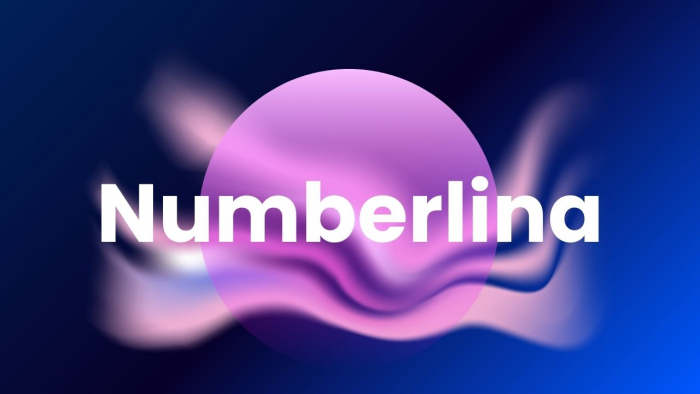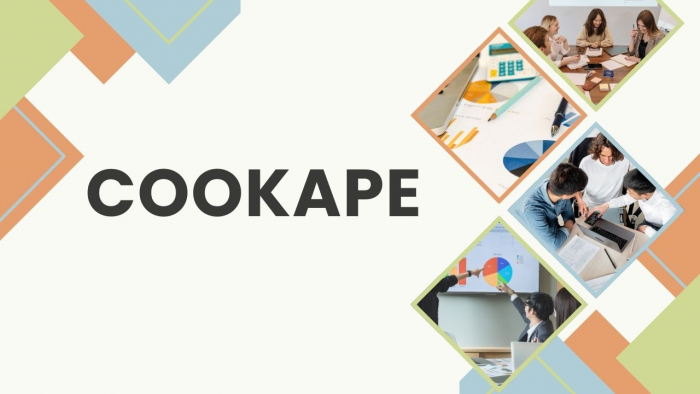Artificial Intelligence (AI) is revolutionizing the way businesses operate in 2025. From automation and analytics to content creation and customer engagement, AI tools now power every aspect of modern business growth. Among the most impactful are ChatGPT, ThoughtSpot, Gumloop, Lindy, monday.com AI, HubSpot AI (Breeze), Zapier AI, IBM Watson Discovery, Beautiful.ai, and Make (Integromat).
These tools are designed to help businesses work smarter, not harder automating repetitive tasks, unlocking deeper insights, and enhancing creativity and collaboration. Whether it’s streamlining workflows, generating content, analyzing data, or improving decision-making, these ten AI platforms offer innovative solutions for every business size and industry. Together, they represent the new era of intelligent, efficient, and scalable business operations powered by AI.
1. ChatGPT

Tool Overview:
ChatGPT, developed by OpenAI, is a conversational AI assistant built to help users generate content, analyze data, answer questions, and automate workflows across web and mobile platforms. It’s widely accessible through desktop and mobile apps, plus API integration for custom use cases.
Key Features
- Natural language chat and content creation
- Data analysis with AI
- File uploads for real-time insights (PDFs, spreadsheets, images)
- Image and video generation (DALL·E 3, Sora)
- Advanced voice mode and screen sharing
- Integration for custom apps via API
Pros:
- Versatile: Automates content, answers, analysis, and coding.
- Easy integrations with existing business workflows.
- Robust advanced access for paid tiers priority usage, faster response, advanced models.
- Custom GPTs for workflow automation.
Cons:
- Daily usage limits on the free plan can block productivity during peak hours.
- Some users find output accuracy varies for complex queries (especially technical or niche domains).
- Occasional lags for free users at busy times.
- Some reviewers on Reddit and Trustpilot cite that response speed can slow and priority support is limited in the free tier
Pricing
- Free Plan: Basic access to GPT-4o, daily limits.
- Plus: $20/month; priority access to GPT-4o, DALL·E, custom GPTs.
- Team: $25/user/month (annual) or $30/user/month (monthly); team management features.
- Pro: $200/month for unlimited GPT-4o, full research tools, voice/video capabilities.
Customer Reviews & Ratings
G2, Trustpilot: 4.5+/5 (average
Praised for usability, robust integrations, and advanced conversational skills, but a handful mention occasional inconsistencies for technical applications.
Best For / Use Case
Solo entrepreneurs, professionals, marketing teams, customer service departments, and anyone needing scalable AI-powered content, analytics, or workflow automation.
2. ThoughtSpot

Tool Overview
ThoughtSpot is an AI-powered analytics platform that enables users to analyze business data, create dashboards, and surface meaningful insights using natural language search and automated visualizations
Key Features
- Natural language query: search anything in business data
- AI assistant “Spotter” and anomaly detection
- Liveboards: interactive, real-time data visualizations
- Deep analytics integrations with Snowflake, Databricks, and more
Pros:
- Easy for business users no coding required
- Predictive insights help catch problems and trends early.
- Large-scale data analytics support and advanced security
- Automated anomaly detection and visualization.
Cons:
- Higher entry pricing compared to other BI tools
- Steep learning curve for teams new to analytics.
- Community/in-app support sometimes slow to resolve issues
- Data modeling and integration setup can be challenging for technical users.
- Price transparency is limited for higher tiers custom quotes dominate
Pricing
- Developer (Free): Up to 5 users, 3M rows, basic search and security.
- Essentials: $1,250/month (annual billing); up to 25M rows, 20 users.
- Pro: Custom pricing, unlimited users, 500M rows.
- Enterprise: Custom pricing; advanced controls, support, and unlimited scale.
Customer Reviews & Ratings
G2: 4.3/5. Praised for ease of use (for business users), real-time alerts, rich visualizations.
Reddit: Data model complexity is a pain point, but good for keeping BI requests off analysts’ desks.
Capterra: Reliable NLP and business-friendly features; some bugs and slow processing noted.
Best For / Use Case
Mid- to large-size organizations, data-driven teams, business analysts, and executives needing real-time analytics and easy dashboarding.
3. Gumloop

Tool Overview
Gumloop is an AI automation platform enabling businesses to connect diverse AI models (GPT-4, Claude, Grok, etc.) to internal workflows. It operates with a drag-and-drop interface, allowing users to automate actions without writing code.
Key Features
- No-code visual workflow builder
- Native integration with major business tools
- Automated triggers, multi-model LLM access
- Multi-seat and workspace collaboration
- Advanced security and analytics features
Pros:
- Powerful automation handles tasks that take hours manually
- Clean, modern UI; intuitive for intermediate users.
- Wide range of integrations (built-in and external APIs)
- Pre-built templates speed up onboarding
- Notable productivity gains (some users report sales boosts).
Cons:
- Steep learning curve; beginners may need significant training (50–100 hours for proficiency)
- Email/community support can be
- slow no live chat for some tiers
- Pricing can be high for small teams; big jump between free and solo/team plans.
- Some users feel overkill for basic automations
Pricing
- Free: 2,000 credits/month, 1 seat, 2 triggers
- Solo: $37/month, 10k+ credits, unlimited triggers
- Team: $244/month, 10 seats, 60k credits
- Enterprise: Custom pricing, advanced controls, unlimited seats.
Customer Reviews & Ratings
G2 4.2–4.5/5. Pros cited are flexibility and speed. Cons are the non-intuitive beginner experience and slow support responses.
Best For / Use Case
- Startups, sales and marketing teams, businesses needing AI-powered workflow
- automation across tools without coding skills.
4. Lindy
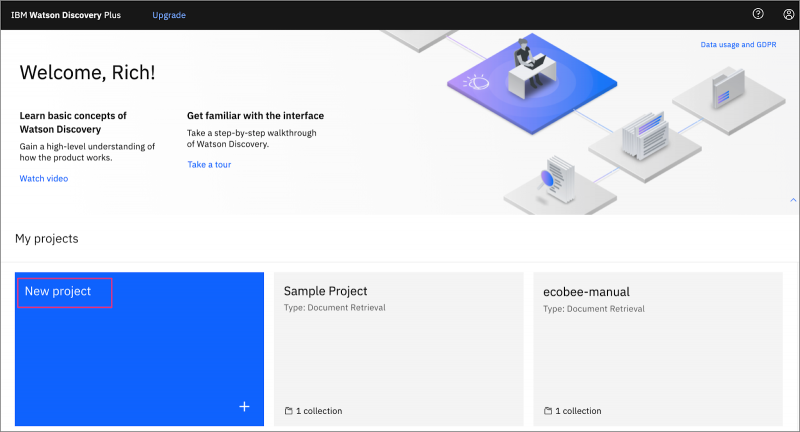
Tool Overview:
Lindy is a no‐code/low‐code AI automation platform that lets businesses build custom agents to handle workflows such as email triage, lead generation, meeting scheduling, document processing, and more.
Key Features:
- Visual drag-and-drop builder for AI agents (no deep programming required).
- Choose or integrate with different LLMs and customise the agent’s logic – e.g., parsing emails, creating tasks.
- Pre-built templates for common workflows (sales outreach, support automation, HR/ops tasks) to accelerate onboarding.
- Credit-based pricing model (tasks/credits consumed per automation run).
Pros:
- Very flexible can adapt to many business functions (sales, HR, operations).
- Lower cost entry (for what you get) compared to some enterprise automation tools.
- Enables automation of tasks that are less structured and thus harder for older rule-based systems.
Cons:
- While no-code, there is still a learning curve (you’ll need to map workflows, pick the right logic).
- Integrations might require technical setup depending on how customised your stack is.
- Credit-based model means costs can increase if usage goes up need to monitor.
Pricing:
Free version available (400 credits, 1 M character knowledge base) according to one review.
Pro plan: approx $49.99/month (5,000+ credits) per review.
Business tier: $299/month ( 30,000+ credits) for heavier usage.
Customer Reviews
G2 reviewers like Lindy’s time savings and easy automation of outreach/operational tasks; common cautions are credit-based costs and integration complexity for custom stacks.
Best For / Use Case:
Startups, small‐to‐mid teams looking to automate non-standard workflows (e.g., parsing emails, scheduling, lead qualification) where the ROI of automation is clear but you don’t want heavy enterprise investment.
5. monday work management
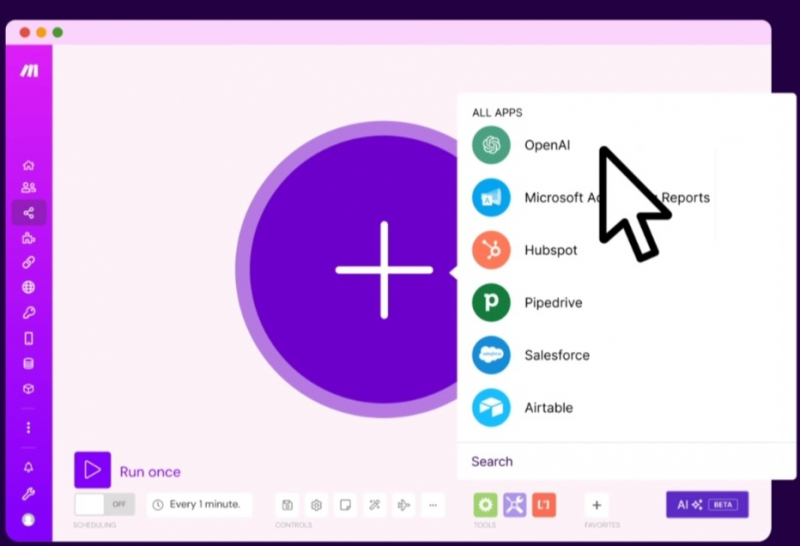
Tool Overview:
monday.com is a widely used work-management and project collaboration platform. In 2025 it has embedded AI features (“AI credits”, “AI sidekick”, risk detection) to help teams automate, predict bottlenecks and manage workflows more intelligently.
Key Features:
- AI “Sidekick” and digital workers to assign tasks, monitor project health, flag risks.
- Automations & integrations built-in; ability to connect boards, apps, tasks, share data.
- Credit-system for AI actions (for example 500 free AI credits per month on standard plans).
- Strong templates and visual boards (Kanban, Gantt, etc) with AI enhancements.
Pros:
- Makes project/work management smarter, less manual updates, more insight.
- Good for teams of various sizes; you can incorporate AI gradually.
- Unified interface for tasks, projects, automation + AI.
Cons:
- Some of the AI capabilities are still in catch-up compared to niche automation tools; usage beyond the free credits may cost extra.
- For very complex workflows or heavy customisation, setup can get sophisticated.
- Cost per user + add-on credit-system may make budgeting trickier.
Pricing:
- Plans from US $9 per seat/month (billed annually) for basic features.
- Higher tiers (Pro, Enterprise) with more automation and integrations; AI credit add-ons apply.
Customer Reviews
Very strong user ratings for project/work management; AI features are helpful for risk detection and automation, but AI credits and add-ons can increase costs.
Best For / Use Case:
Teams that already use monday.com for project/work-management and want to layer in AI for smarter workflow, risk detection, and task automation. Good for mid-sized businesses moving toward more mature processes.
6. HubSpot AI (Breeze Assistant)
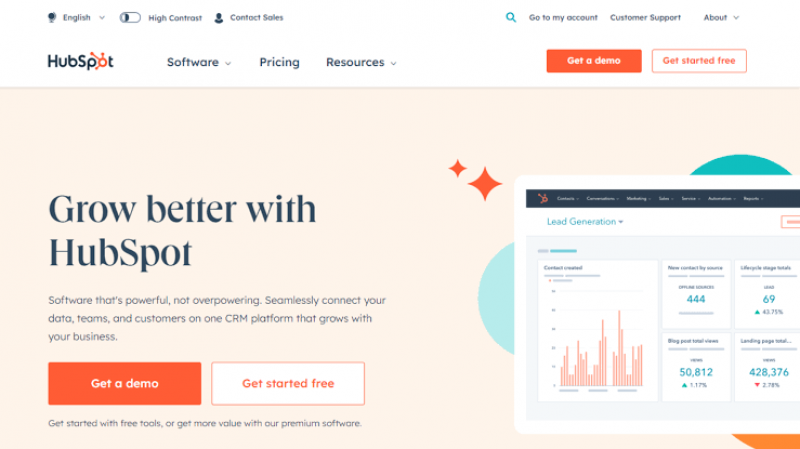
Tool Overview:
HubSpot has embedded AI features across its CRM, Marketing Hub, Sales Hub and Commerce Hub. The “Breeze Assistant” (their AI companion) connects business data and helps automate marketing, sales, service workflows.
Key Features:
- Breeze Assistant: conversational AI tied to your CRM data to assist with tasks, content creation, insights.
- AI built for GTM (go-to-market) teams: marketing content, sales prospecting, service automation.
- Ability to leverage your business’s own data (CRM, client info) for personalized actions.
Pros:
- Strong for business that already uses HubSpot tight data integration means AI can be more context-aware.
- Reduces manual tasks in marketing, sales, service (freeing your teams to focus on strategy).
- Growing AI ecosystem / new features rolling out in 2025.
Cons:
- Advanced AI features are often locked behind higher/expensive tiers; cost may scale significantly.
- Only as good as the data you feed it if your CRM/data ecosystem is messy, benefits reduce.
- Might be over-kill for very small teams that don’t yet leverage the full CRM/marketing stack.
Pricing:
- HubSpot uses per‐seat + credits model; exact pricing varies by hub (Marketing, Sales, Service) and AI usage.
- Reviewers note unpredictable costs due to “credits”.
- Basic AI features are available in free/low tier; premium AI features require higher tiers.
Customer Reviews
HubSpot scores well across its product suite; Breeze Agents (Knowledge, Customer, Content, Prospecting) are useful when your CRM data is clean but advanced AI features may be behind higher tiers and credit usage.
Best For / Use Case:
Growing businesses that use HubSpot for marketing/sales/service and want to incorporate AI to handle repetitive tasks (lead generation, content drafting, service responses) while freeing their team for higher-value work.
7. Zapier
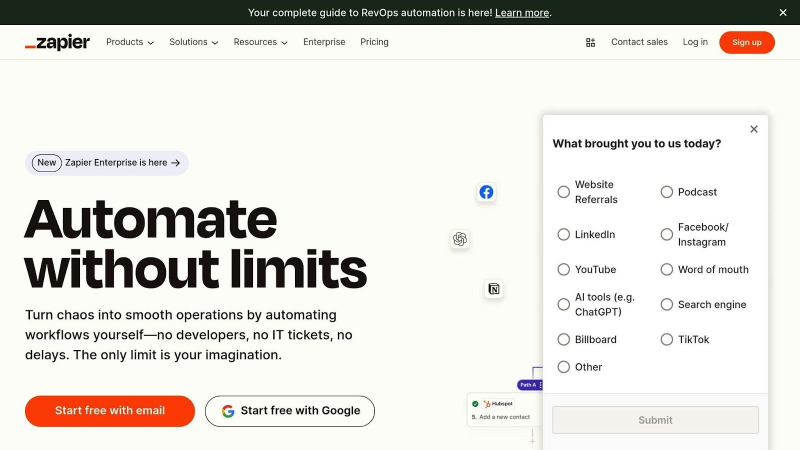
Tool Overview:
Zapier is a widely used no-code automation platform (connecting thousands of apps). In 2025 it has enhanced its AI capabilities (LLM integrations, prompt-based “Zaps”, AI action suggestions) so it’s more than just “if this then that”.
Key Features:
- Connects 7,000+ apps, allowing you to orchestrate workflows across your business stack.
- AI triggers/actions: e.g., scanning an email, using LLM to classify or extract information, then trigger app actions.
- No-code (or low code) interface, making it accessible for business users.
Pros:
- Very flexible; you can automate across many disparate tools you already use (CRM, spreadsheets, Slack, etc).
- Good for glue use-cases where you want to tie together many systems without custom dev.
- Entry cost is moderate; easier to get started than many heavy enterprise automation tools.
Cons:
- For very complex workflows (heavy logic, many steps, generative AI inside), you may bump into limitations or need higher tier/credits.
- Some of the newer AI features may still be evolving; you’ll need to test for your specific needs.
- Cost can creep if you run many automations or use many tasks(actions) per month.
Pricing:
- Entry tiers around $19–20/month per report.
- Higher usage plans (many “tasks” per month) cost more; charges may be based on number of actions/executions.
Customer Reviews
Reliable for connecting many apps; praised for ease and “glue” automations. Newer AI integrations extend functionality but heavy usage can raise costs.
Best For / Use Case:
Small to mid-sized business that already have many tools (apps) and want to save time by automating linkages between them (e.g., new lead in CRM → Slack alert + create task + email follow-up), especially when AI classification or generation is involved.
8. IBM Watson Discovery

Tool Overview:
IBM Watson Discovery is an enterprise-grade AI solution for unstructured data (documents, PDFs, emails, support tickets) helping businesses search, analyse and extract insights from large text corpora.
Key Features:
- Natural language processing (NLP) and search capabilities on unstructured content (documents, internal knowledge bases).
- Can surface hidden insights, trends, or risks from text data that’s hard to query via standard BI tools.
- Designed for enterprise-scale deployments, secure data, compliance.
Pros:
- Powerful for businesses that have lots of text/unstructured content and need actionable insights (legal docs, support tickets, reports).
- Strong vendor support, enterprise readiness (security, governance).
- Bridges gap between raw data and human-usable insights.
Cons:
- Likely higher cost and more complex setup than simpler tools.
- Won’t be necessary if your business doesn’t deal with large volumes of unstructured data.
- Requires skilled configuration (you’ll need to map your content, define queries, integrate).
Pricing:
- Starts around $500/month per review.
- Enterprise/custom pricing for large scale.
Customer Reviews
Good enterprise NLP/search for unstructured content; reviewers note strong insights and enterprise readiness but warn about setup complexity and cost.
Best For / Use Case:
Mid- to large-sized organisations, especially those in sectors like legal, finance, research, or large support/service operations, where large volumes of text/unstructured data need to be analysed for insights.
9. Beautiful.ai
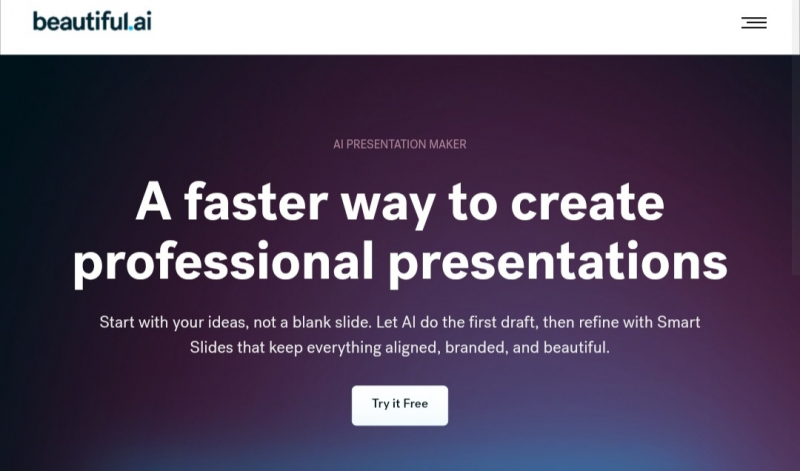
Tool Overview:
Beautiful.ai is an AI-powered presentation/design tool for creating branded visual decks, slides and stories. It helps businesses build high-quality presentations faster, with intelligent layout suggestions, template support and automated design. (Mentioned in many “top AI tools for business 2025” round-ups)
Key Features:
- Smart slide layouts: you input content, and the tool suggests/designs optimal visual layout.
- Branded templates: maintain brand consistency, speed up slide creation.
- Collaboration features: teams can work on decks, share, iterate.
Pros:
- Helps non-designers create professional-looking presentations quickly.
- Saves time, improves visual quality and brand consistency.
- Ideal for marketing, sales, internal reporting (especially when you need to present to stakeholders).
Cons:
- Less focused on automation of business operations or data workflows (more design-oriented).
- Advanced features may require higher tiers; may still need some manual tweaks.
- For very complex custom presentations, may still require a designer.
Pricing:
Reviews indicate starting tier around $12/user/month (when billed annually) for teams.
Free trials available.
Customer Reviews
High marks for saving presentation time and producing clean, branded slides; downsides in some users’ eyes: export fidelity, occasional slowness and support responsiveness. G2/Capterra averages are strong 4.5+ rating
Best For / Use Case:
Startups, small/mid marketing/sales teams who frequently need to create pitch decks, internal reports, client presentations, and want to standardise and speed up the process without hiring full-time designers.
10. Make.com

Tool Overview:
Make is a no-code/low-code automation platform that enables businesses to orchestrate workflows across many apps and services, embed generative AI (LLMs) into processes, and monitor performance in real time.
Key Features:
- Visual drag-and-drop “scenario” builder to design workflows (triggers → actions) without deep coding.
- Integration with a wide variety of apps and AI/LLM models (e.g., generative AI for summarisation, classification) so you can incorporate content generation, data classification, summarisation inside your business flows.
- Real-time monitoring and analytics of workflows (logs, data flow visualisation, performance tracking).
- Advanced logic tools: filters, routers, iterators, error-handling, API/webhook modules for custom integrations.
Pros:
- Very flexible and powerful: you can connect many systems, add AI steps, build custom automations for operations, sales, marketing, support.
- Good for businesses that want one unified automation hub rather than many disconnected tools.
- The no-code visual interface means non-developers (or “citizen automators”) can build meaningful workflows.
- Because you can embed AI steps (LLMs) inside workflows, you get both automation + intelligence, not just “if this then that”.
Cons:
- While no code, there is a learning curve for complex workflows (many steps, branching logic, data mapping).
- Usage/credits and cost can grow quickly if you embed many AI steps or trigger many runs.
- Some users report slower support response and need for better documentation for advanced use-cases.
Pricing:
Various pricing tiers based on “operations” (or workflow runs) usage; there’s a free tier and paid tiers that scale with volume of operations + features.
(You’ll want to check Make’s website for the most current pricing in your region.)
Customer Reviews & Ratings:
On GetApp: Overall rating 4.8/5 across 400+ reviews; value for money 4.7/5.
On Capterra: Users praise its flexibility, visual builder and value-for-cost. One review: “I did in 2 hours what I imagined would have taken me 1 month. It’s crazy easy to set up.
Best For / Use Case:
Businesses of small-to-mid size (and even larger) that have multiple apps/tools (CRM, spreadsheets, Slack/Teams, email, forms) and want to streamline operations by automating processes and adding AI intelligence. Especially useful for “connect the stack + automate + insert AI” use-cases (e.g., when a form is submitted → AI classifies the response → CRM is updated → Slack alert sent).
AI Tools Comparison Table (2025 Edition)
| Tool | Main Purpose | Best Feature | Best For | Key Consideration |
| ChatGPT | Generative content + automation | Natural language, file uploads, API integration | Solo entrepreneurs, marketing teams, workflow automation | Free tiers have limits; accuracy varies |
| Gumloop | Business analytics + dashboards | Natural language query, anomaly detection | Mid/large orgs and data analysis | Higher entry cost, setup complexity |
| ThoughtSpot | No-code AI workflow automation | Drag-&-drop builder, multi-model access | Startups, sales/marketing teams ready to invest | Learning curve, cost scaling |
| Lindy | No-code custom AI agents | Agent builder for emails, tasks, leads | Small/mid teams automating workflows | Credit-based model; integrations may need effort |
| monday.com | Work & project management with AI | AI sidekick, task risk detection | Teams wanting smarter collaboration | AI credits may add cost |
| HubSpot AI | CRM + marketing + sales AI | Context-aware assistant using business data | Revenue, sales, marketing teams | Advanced features behind expensive tiers |
| Zapier | App workflow automation | Connect thousands of apps, AI triggers | Solo entrepreneurs, marketing teams, workflow automation | Setup complexity, enterprise pricing |
| IBM Watson | Unstructured data analysis | NLP for document search & insights | Large orgs with heavy text/document data | Task volume can raise costs |
| Beautiful.ai | Presentation & design acceleration | Smart layouts, branded templates | Marketing/sales teams needing decks fast | Limited for business logic automation |
| Make | No-code visual automation + AI | Drag-and-drop builder, real-time monitoring | SMBs, startups, CRM and ops automation | Steeper learning curve; costly scaling at high usage |
Decision Guidance & Tips
Choose based on your business function & maturity level: If you’re a startup (like your apparel business) and need to automate tasks quickly, pick tools like Lindy or Zapier. If you’re growing and have structured data/teams, tools like monday.com or HubSpot AI will give more value.
- Integrations matter a lot: Many tools succeed or fail based on how well they connect to your existing stack (CRM, email, Slack, spreadsheets).
- Start small, prove ROI: Many tools use credit/usage models or have scaling cost. Use a pilot, measure time saved/impact, then scale.
- Don’t just automate optimize: The best AI tools don’t just replace manual work, they surface insights you wouldn’t have had. For example, monday.com’s AI risk detector or HubSpot’s CRM-context AI help you see things before they become problems.
- Watch for data quality & governance: Especially with tools that use your business data (HubSpot, Watson). If your data is messy, the AI will struggle.
- User training & change management: Even the most powerful tool needs users trained, workflows defined, and buy-in from teams.
- Budget wisely for scale: Free or low-tier usage may suffice initially, but when usage grows (many automations, many AI credits, many users) the cost can grow quickly.
Tips to Get the Most Out of These Tools
- Start with training modules leverage platform-specific guides and community forums.
- Use built-in templates to accelerate onboarding and minimize errors.
- For advanced analytics, embed custom dashboards in business workflows
- Link with third-party tools through API or integrations (Gumloop and ChatGPT) for seamless automation.
- Monitor usage limits and scale up plans only when ROI is proven; consider custom pricing if scaling beyond basic tiers.
Conclusion
In 2025, AI isn’t just transforming workflows it’s redefining how businesses think, decide, and grow.
Each tool plays a unique role in making organizations smarter and more efficient:
- ChatGPT revolutionizes communication, creativity, and automation.
- ThoughtSpot empowers real-time data-driven decisions.
- Gumloop simplifies no-code AI automation for modern teams.
- Lindy builds custom AI agents that work like digital teammates.
- monday.com AI enhances productivity with smart task management.
- HubSpot AI (Breeze) personalizes marketing, sales, and CRM operations.
- Zapier AI connects thousands of apps for seamless workflow automation.
- IBM Watson Discovery delivers deep insights from complex, unstructured data.
- Beautiful.ai turns ideas into professional presentations in minutes.
- Make connects systems visually to automate and scale effortlessly.
Together, these tools represent the next era of intelligent business ecosystems where humans focus on innovation and strategy, while AI handles the complexity.
The future belongs to those who adapt, automate, and amplify with AI.
Post Comment
Be the first to post comment!




